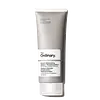What's inside
What's inside
 Key Ingredients
Key Ingredients

 Benefits
Benefits

 Concerns
Concerns

 Ingredients Side-by-side
Ingredients Side-by-side

Michelia Alba Flower Extract 2%
Skin ConditioningMaranta Arundinacea Root Extract 1.5%
SmoothingNuphar Luteum Leaf Extract 1.5%
Skin ProtectingNelumbo Nucifera Flower Extract 1%
Skin ConditioningPinus Pinaster Leaf Extract 1%
Skin ConditioningRose Extract 1%
Skin ConditioningJasminum Officinale Flower Oil 1%
PerfumingHoney 1%
HumectantLava Extract 1%
Skin ConditioningAzadirachta Indica Leaf Extract 0.5%
Skin ConditioningCrocus Sativus Flower Extract 0.5%
MaskingGlycerin
HumectantTocopherol
AntioxidantDehydroxanthan Gum
Emulsion StabilisingDecyl Glucoside
CleansingCoco-Glucoside
CleansingSodium Levulinate
Skin ConditioningPhytic Acid
Michelia Alba Flower Extract 2%, Maranta Arundinacea Root Extract 1.5%, Nuphar Luteum Leaf Extract 1.5%, Nelumbo Nucifera Flower Extract 1%, Pinus Pinaster Leaf Extract 1%, Rose Extract 1%, Jasminum Officinale Flower Oil 1%, Honey 1%, Lava Extract 1%, Azadirachta Indica Leaf Extract 0.5%, Crocus Sativus Flower Extract 0.5%, Glycerin, Tocopherol, Dehydroxanthan Gum, Decyl Glucoside, Coco-Glucoside, Sodium Levulinate, Phytic Acid
Water
Skin ConditioningCaprylic/Capric Triglyceride
MaskingCetyl Ethylhexanoate
EmollientIsodecyl Neopentanoate
EmollientGlycerin
HumectantPropanediol
SolventPolyglyceryl-6 Polyricinoleate
EmulsifyingHydrogenated Vegetable Oil
EmollientPolyglyceryl-2 Isostearate
EmulsifyingIsosorbide Dicaprylate
Skin ConditioningDisteardimonium Hectorite
StabilisingPhytosteryl Canola Glycerides
Skin ConditioningGlycosphingolipids
EmollientGlycolipids
Skin ConditioningLinoleic Acid
CleansingOleic Acid
EmollientPalmitic Acid
EmollientStearic Acid
CleansingArginine
MaskingGlycine
BufferingAlanine
MaskingSerine
MaskingProline
Skin ConditioningThreonine
Glutamic Acid
HumectantLysine Hcl
Skin ConditioningBetaine
HumectantXylitylglucoside
HumectantAnhydroxylitol
HumectantXylitol
HumectantGlucose
HumectantMaltose
MaskingFructose
HumectantTrehalose
HumectantSodium PCA
HumectantPCA
HumectantSodium Lactate
BufferingUrea
BufferingAllantoin
Skin ConditioningSodium Hyaluronate
HumectantLecithin
EmollientTriolein
Skin ConditioningDimethyl Isosorbide
SolventPentylene Glycol
Skin ConditioningTocopherol
AntioxidantHydroxymethoxyphenyl Decanone
Skin ConditioningCitric Acid
BufferingTrisodium Ethylenediamine Disuccinate
Magnesium Sulfate
Sodium Chloride
MaskingSodium Hydroxide
BufferingPhenoxyethanol
PreservativeChlorphenesin
AntimicrobialWater, Caprylic/Capric Triglyceride, Cetyl Ethylhexanoate, Isodecyl Neopentanoate, Glycerin, Propanediol, Polyglyceryl-6 Polyricinoleate, Hydrogenated Vegetable Oil, Polyglyceryl-2 Isostearate, Isosorbide Dicaprylate, Disteardimonium Hectorite, Phytosteryl Canola Glycerides, Glycosphingolipids, Glycolipids, Linoleic Acid, Oleic Acid, Palmitic Acid, Stearic Acid, Arginine, Glycine, Alanine, Serine, Proline, Threonine, Glutamic Acid, Lysine Hcl, Betaine, Xylitylglucoside, Anhydroxylitol, Xylitol, Glucose, Maltose, Fructose, Trehalose, Sodium PCA, PCA, Sodium Lactate, Urea, Allantoin, Sodium Hyaluronate, Lecithin, Triolein, Dimethyl Isosorbide, Pentylene Glycol, Tocopherol, Hydroxymethoxyphenyl Decanone, Citric Acid, Trisodium Ethylenediamine Disuccinate, Magnesium Sulfate, Sodium Chloride, Sodium Hydroxide, Phenoxyethanol, Chlorphenesin
 Reviews
Reviews

Alternatives
Ingredients Explained
These ingredients are found in both products.
Ingredients higher up in an ingredient list are typically present in a larger amount.
Glycerin is already naturally found in your skin. It helps moisturize and protect your skin.
A study from 2016 found glycerin to be more effective as a humectant than AHAs and hyaluronic acid.
As a humectant, it helps the skin stay hydrated by pulling moisture to your skin. The low molecular weight of glycerin allows it to pull moisture into the deeper layers of your skin.
Hydrated skin improves your skin barrier; Your skin barrier helps protect against irritants and bacteria.
Glycerin has also been found to have antimicrobial and antiviral properties. Due to these properties, glycerin is often used in wound and burn treatments.
In cosmetics, glycerin is usually derived from plants such as soybean or palm. However, it can also be sourced from animals, such as tallow or animal fat.
This ingredient is organic, colorless, odorless, and non-toxic.
Glycerin is the name for this ingredient in American English. British English uses Glycerol/Glycerine.
Learn more about GlycerinTocopherol (also known as Vitamin E) is a common antioxidant used to help protect the skin from free-radicals and strengthen the skin barrier. It's also fat soluble - this means our skin is great at absorbing it.
Vitamin E also helps keep your natural skin lipids healthy. Your lipid skin barrier naturally consists of lipids, ceramides, and fatty acids. Vitamin E offers extra protection for your skin’s lipid barrier, keeping your skin healthy and nourished.
Another benefit is a bit of UV protection. Vitamin E helps reduce the damage caused by UVB rays. (It should not replace your sunscreen). Combining it with Vitamin C can decrease sunburned cells and hyperpigmentation after UV exposure.
You might have noticed Vitamin E + C often paired together. This is because it is great at stabilizing Vitamin C. Using the two together helps increase the effectiveness of both ingredients.
There are often claims that Vitamin E can reduce/prevent scarring, but these claims haven't been confirmed by scientific research.
Learn more about Tocopherol